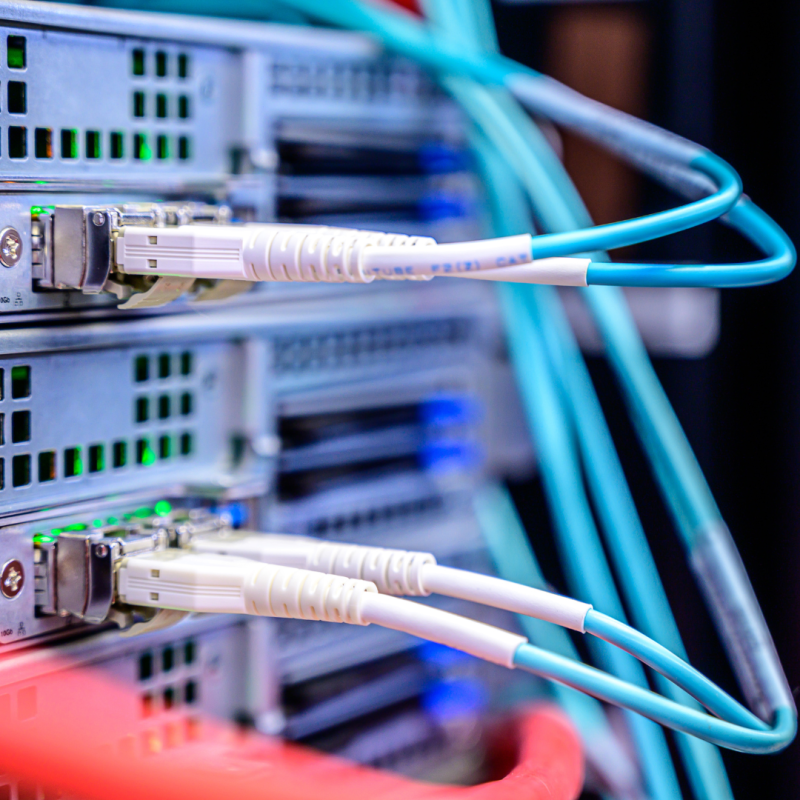The Ultimate ERP Checklist for eCommerce Growth
Introduction
The world of eCommerce is growing at lightning speed. Many webshops start out simple: a user-friendly platform like Shopify, Magento or WooCommerce, connected to basic accounting software such as Xero, Sage or QuickBooks.
That works fine in the early stages, but as orders increase and multiple sales channels are added, things quickly become complicated. Managing orders, inventory and customer data separately leads to manual work and costly mistakes.
If you want to scale your business, your technology – and especially the combination of your eCommerce platform and ERP system – needs to be scalable. In this blog, I explain why ERP integration is essential and which factors determine whether your webshop is ready to grow.
Why ERP + eCommerce is the key to growth
Without a solid connection between your webshop and back office, you’ll run into problems: missed orders, inventory mismatches, shipping delays or limited financial insight.
An integrated system prevents that. All data and processes come together in one place. As soon as an order comes in, the ERP automatically updates inventory, generates an invoice and records the transaction in your financials. The result: fewer errors, faster processing and the ability to grow without skyrocketing overhead costs.
The building blocks of a scalable setup
1. One central data source
Everything starts with real-time data. A modern ERP ensures that orders, inventory levels, product information and customer records are always up to date. No more manual exports or scattered spreadsheets – just one single source of truth for all teams.
Example: if a product runs out in one warehouse, this is immediately reflected in your webshop and marketplaces like Amazon. That way, you avoid overselling and disappointed customers.
2. Multi-channel integration
Growth usually means selling through multiple channels: your own webshop, Amazon, eBay, TikTok Shop or even physical stores.
An ERP that connects all these channels ensures you don’t have to maintain data separately everywhere. Stock levels, prices and product information remain consistent. Your team works from one dashboard, while your customers enjoy the same experience everywhere.
3. Smart inventory and order management
Few things are as frustrating as being unable to fulfill an order. With an integrated system, you manage inventory in real time, plan replenishments automatically and streamline the entire order flow – from online purchase to shipping and tracking.
Especially during peak times (think Black Friday or a viral TikTok product), this can mean the difference between chaos and control.
4. Financial processes that grow with you
As your business grows, so does the complexity of your accounting. An ERP connects all sales directly to your bookkeeping: revenue, VAT, refunds and expenses are automatically recorded.
This gives you insight into cash flow, profitability and tax obligations at any time. Multi-currency and international sales can also be managed more easily from one system.
5. Automating where possible
Manually retyping order lines or adjusting stock counts isn’t scalable. An ERP takes over repetitive tasks, such as:
-
Automatically generating invoices for new orders
-
Matching payments with the correct invoices
-
Low-stock alerts and automated reordering
-
Sending daily reports by email
The result: fewer mistakes and more time for your team to focus on growth.
6. Better insights through reporting
Data scattered across multiple tools makes reporting difficult. With an integrated system, you can easily analyze:
-
Which products are most profitable
-
Which channels are growing the fastest
-
Where bottlenecks occur in your supply chain
Real-time dashboards ensure you can adjust in time and base decisions on facts instead of gut feeling.
7. Ready for the future
A good ERP grows with you. Today you might only need inventory management and financials, but later you can easily add modules like CRM, WMS or integrations with logistics partners.
Cloud solutions are ideal here: flexible, scalable and always up to date. This way, your software never becomes the bottleneck for growth.
The ERP + eCommerce growth checklist
Curious if your setup is ready to scale? Use this checklist:
-
One central data source: all information real-time and accurate
-
Multi-channel integration: seamless connection with all sales channels
-
Real-time inventory management: always up-to-date stock levels
-
Streamlined order flow: from order to delivery without manual work
-
Integrated financials: bookkeeping runs automatically
-
Automation: repetitive tasks handled by the system
-
Powerful reporting: insight into profit, trends and bottlenecks
-
Scalable systems: easy to expand without hassle
-
Consistent customer experience: same prices, stock and service everywhere
-
Team ready for growth: clear processes, trained staff
The more points you can check off, the better prepared you are for rapid growth.
Conclusion
Scaling is about more than just increasing sales. It requires a solid foundation. With an integrated ERP + eCommerce environment, you build that foundation. Your people, processes and technology work together in one seamless chain.
Whether you’re growing in order volume, sales channels or new markets: you can handle it without stress, mistakes or endless extra staff.
In short: a modern ERP integration turns growth from an obstacle into an opportunity. And that’s exactly what you need to future-proof your eCommerce business.






-51679.png?width=800&crop=510%2C0%2C1080%2C1080&signature=c1a172dbcd38a98685da39191e7525cce4461f18)
-71423.png?width=800&crop=372%2C0%2C1080%2C1080&signature=78a97ca4586e9cac651dd5f5f65620b365b453ad)